Transgender Voice Services

Non-Surgical
General Expectations
We understand that his journey has been challenging and that your goal, just like that of anyone else, is to feel whole and comfortable just being you. We acknowledge this, but meaningful change is seldom quick or easy. Your eyes have probably already done some work to adjust to the new reflection in the mirror. Your ears will also have to adjust to the sound of your new voice; and most importantly, we want to have your brain work in harmony with your appearance and your voice.
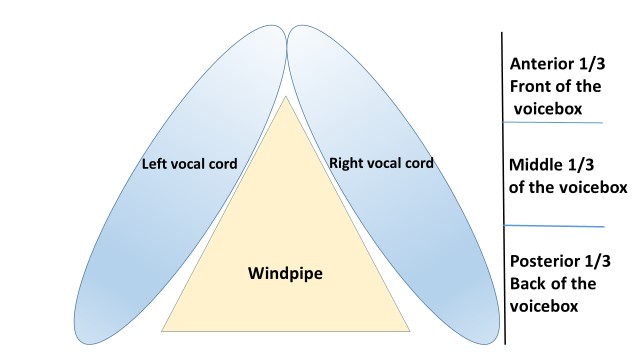
A
Surgical
PITCH ALTERING SURGICAL THERAPY (PAST) PROCEDURES
The voice can be one of the most personal and distinctive features of how we present ourselves and how we interact with the world around us. We understand that for people who are in the process of confirming their gender identity with their outward presentation, voice issues are important. At the Chicago Institute for Voice Care, we tailor our Laryngological and Speech Language Pathology services to patients in the process of gender confirmation and we are a part of the Gender Confirmation team at Weiss Memorial Hospital (see link below).
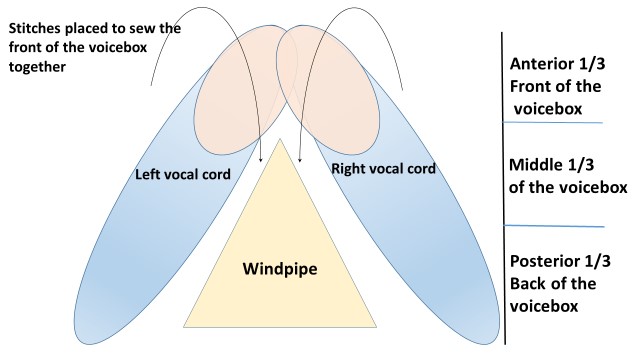
C
We aim to help you develop and maintain a voice that is congruent with your gender presentation at work and in the community. We offer behavioral, rehabilitative and surgical options and we will do our best to help determine which option is right for you. We realize that you are walking into a new identity, so we would like to assist you in leaving some of the “old you” in the past.
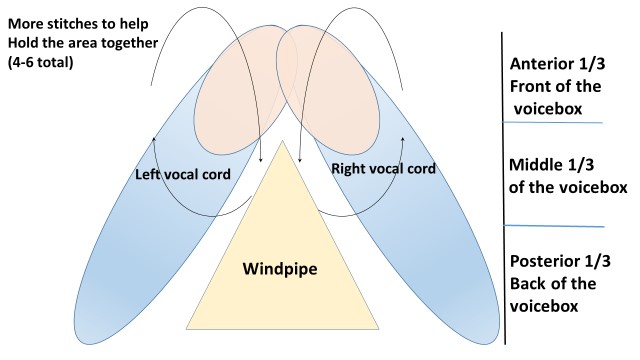
D
Pitch Altering Surgical Therapy (PAST)
The most commonly performed procedures are to raise pitch and more readily applied to M to F individuals. For F to M individuals, hormonal therapy often helps one achieve the desire goals. One surgical option for raising pitch is the Wendler glottoplasty to shorten the vocal cords (folds). The basic concept is that vocal cords (folds) that are shorter can vibrate at a higher frequency. Since the pitch of the voice is determined by the frequency of vibrations, higher frequencies will give you a higher voice. The procedure is done through a scope, which means that there is no visible scar. We join the front part of the vocal cords together with stitches and when this heals, it makes the part of the vocal cords that vibrate shorter (see A-E). This is done under general anesthesia (fully asleep with a breathing tube), but it can usually be done as an outpatient surgery.
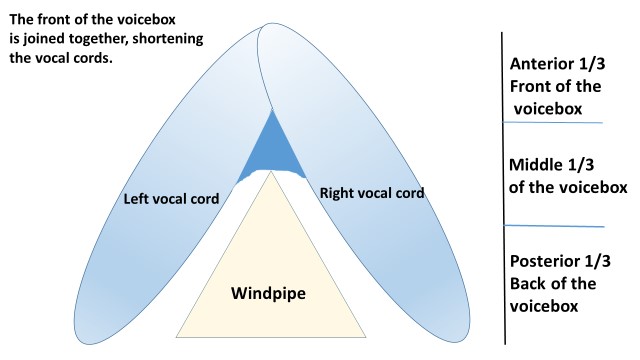
E
For patient who feel that a PAST procedure is best for them, it can take 6-8 months for the voice to feel “natural” or “comfortable.” Voice therapy will absolutely continue even after a procedure. Healing may vary among patients and your team will review how certain medical conditions and medications can affect results.
Because the voice, in general, should be fine-tuned, we may need to “touch up” areas to achieve the best fit between your pitch and how you would like to present yourself. We are committed to helping you achieve your voice goals.
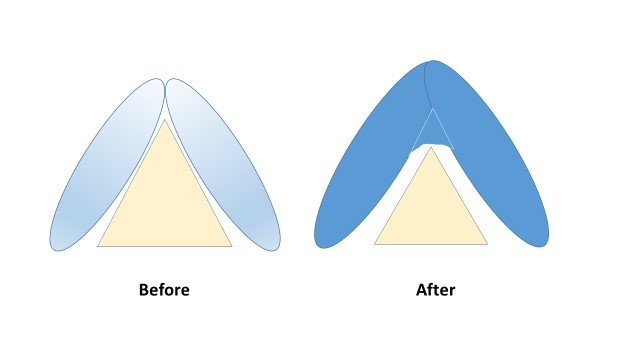
F